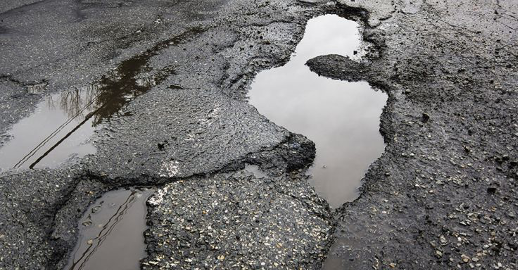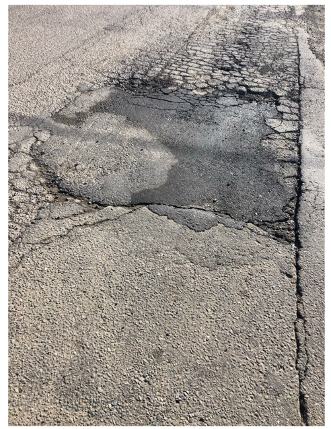Infrastructure Series: Potholes
By Marcus Kirkwood
Most of what happens at Outpost offices takes place in Denver, CO. There are two constants in Denver: sun and ever-changing weather. Colorado is notorious for our snow in the morning, blue skies and green grass in the afternoon days. Snow in our state doesn’t stick around for long. However, due to so much warmth coming from the sun, we often have major temperature swings at night.
A normal fall or spring day could include a 30-degree morning followed by highs in the upper 60s and low 70s, dropping back below freezing by the following sunrise. Even in the heart of winter, we often see temperatures rise well above freezing. Hence, our pothole problem.

Potholes are caused by freeze-thaw cycles. When temperatures are above freezing, water finds its’ way into any little pore it can find. By nature, asphalt is more porous than concrete, thus allowing more water to enter through cracks and holes than concrete would. Once that water gets in, there’s nowhere for it to go, so it sits and waits. Eventually, temperatures drop below freezing, causing that water to turn into ice. And we all know what happens when water turns to ice:

It grows. As water entrenched in asphalt turns to ice, something has to give and the ice below the surfaces causes the asphalt to pop up, erode away and turn start its’ life as a pothole.
From here, the problem (and pothole) only get bigger. The only way to fix a pothole is with asphalt cold patch. However, the fix is never as good as the original, so we tend to see asphalt patches morph and erode faster than the original roadway.

The short answer: once ice creates its’ first pothole, it becomes a nesting ground for more. Cold patch is the best, quick fix we have, but it’s certainly not great. Hence so many highly trafficked thoroughfares turning to concrete as their long term, more expensive solution.